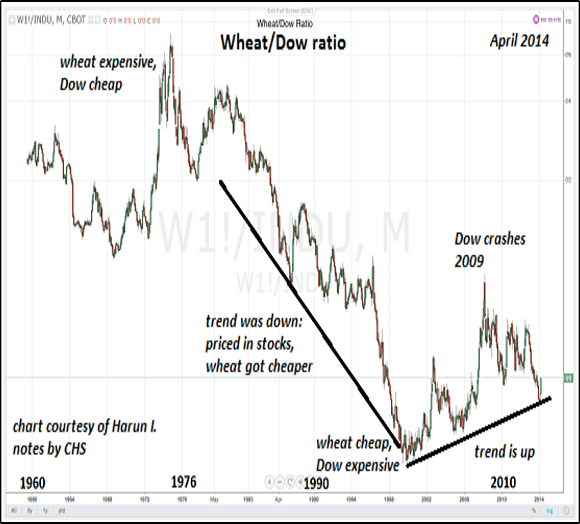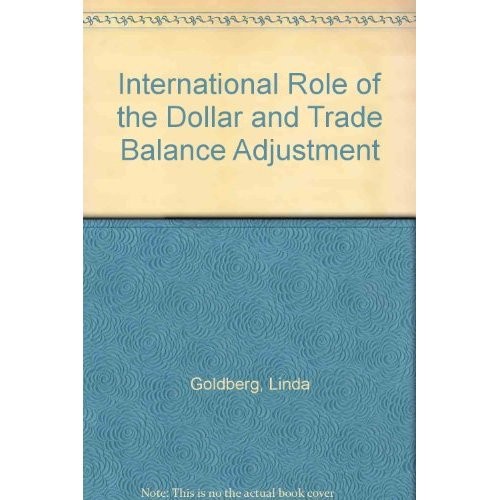The dollar’s international roles
Post on: 21 Октябрь, 2015 No Comment

Search form
What is the status of the international roles of the dollar?
Linda Goldberg 31 March 2010
By many measures, the dollar is the most prominent currency in the world. It plays a central role in international trade and finance as both a store of value and a medium of exchange.
- Many countries maintain an exchange rate regime that anchors the value of their home currency to that of the dollar.
- Dollar holdings make up a large share of official foreign exchange reserves, the foreign currency deposits and bonds maintained by central banks and monetary authorities.
- In international trade, the dollar is widely used for invoicing and settling import and export transactions around the world.
Despite this, the future of the dollar is the subject of active debate among economists and in the policy community (Chinn and Frankel 2008, Frankel 2008. Papaioannou and Portes 2008, Pisani-Ferry and Posen 2009).
In recent research (Goldberg 2010), I examine the role of the dollar across several key areas of international trade and finance. In this column, I present it in an abridged form for six areas (see my article for more detail). Jumping ahead, my conclusion is that the dollar retains its status as the dominant international currency in all major categories of use.
- The dollar is a major form of cash currency around the world. The majority of dollar banknotes are estimated to be held outside the US. More than 70% of hundred-dollar notes and nearly 60% of twenty- and fifty-dollar notes are held abroad, while two-thirds of all US banknotes have been in circulation outside the country since 1990 (Figure 1).
Figure 1. Share of US banknotes held outside the US
20fig%201.png /%
Source: Federal Reserve Bank of New York estimates, based on U.S. Treasury Department (2005)
- The dollar remains prominent in exchange rate arrangements. While the dollar was the central currency in the Bretton Woods period, today there are alternative choices available. Nevertheless, many countries have dollar-based exchange rate arrangements. With exchange-rate regimes defined according to the Reinhart and Rogoff (2004) approach, seven countries currently are dollarised or have currency boards using the dollar and eighty-nine have a pegged exchange rate against the dollar (Table 1). The share of countries linking their currency to the dollar in some manner has been stable since 1995, and this group represents more than a third of world GDP (excluding the US).
Table 1. Countries reporting dollar-based exchange rate arrangements
20tbl%201.JPG /%
- The dollar remains the dominant currency in foreign exchange reserve accounts. Foreign governments’ foreign exchange reserve accounts, essentially the governments’ foreign currency savings, can be large. In 2009, dollar assets accounted for about two-thirds of the reserve assets of industrialised and developing countries (Figure 2).
Figure 2. Foreign currency reserve holdings
20fig%202.png /%

Source: International Monetary Fund, Currency Composition of Official Foreign Exchange Reserves (CCFER) data
Among industrialised countries’ holdings, a sharp jump in the dollar share occurred between 1995 and 2000. The rise can be explained primarily by changes in the reserve holdings of euro-area countries. With the introduction of the euro, the legacy currency reserves of euro-area countries – the deutsche marks, francs, lira, and other currencies replaced by the euro – were reclassified as local currencies and therefore were no longer considered foreign currency reserves; this shift in the composition of the countries’ reserve portfolios meant that the dollar assumed a much larger share of the remaining reserves.
Since 2000, the dollar share declined only modestly in the portfolios of industrialised countries. Although a decline in reserve holdings occurred during the global financial crisis, the dollar share of reserve holdings for both industrialised and developed countries remained above 60%.
- The dollar is a leading transaction currency in the foreign exchange markets. With an 86% share in the volume of international trade and financial markets – more than twice the share of the euro – the dollar continues to dominate these markets (Table 2). Turnover volumes in the foreign exchange markets have more than doubled in the past decade, implying large numbers of transactions measured in reference to, or involving, the dollar.
Table 2. Turnover in traditional foreign exchange markets (percent)
20tbl%202.JPG /%
- Another likely contributor to the dollar’s leading role in foreign exchange transactions is the currency’s widespread use in the invoicing of international trade. As shown in Goldberg and Tille (2008), the use of the dollar in export invoicing is substantial and far exceeds what could be explained by country exports to the US. Some of the countries with strong dollar use are in proximity to the US (Canada, Mexico). Latin American, and Asia, or are commodity-intensive exporters.
- The dollar also serves as a prominent currency in the international debt markets (European Central Bank 2009, Couerdacier and Martin 2007, and Thimann 2008). One measure is the share of all outstanding debt securities, issued anywhere in the world, denominated in dollars. According to this measure, the dollar’s share stands at approximately 39%, down only slightly from a high of 42% in 1999. The dollar remains the primary financing currency for issuers in the Middle East, Latin America, Asia, and the Pacific area. The euro dominates issuances in Scandinavia, the UK, and the new member states of the European Union. Issuers in Africa have roughly an equal reliance on dollars and euros.
The international role of the dollar remains substantial a decade after the introduction of the euro, and despite changes in the value of the dollar and the financial turmoil that began in 2007. Factors that may have contributed to this continuing strength include inertia in currency use in certain transactions (Krugman 1980). That is, the dollar’s established and deep role in international markets may make it difficult for users to shift to a less entrenched currency – this is the logic of network externalities.
In the markets for international trade and finance, higher transaction volumes contribute to lower bid-ask spreads and reduced implicit transaction costs for using dollars – advantages that in turn reinforce the use of the dollar in these transactions. This self-reinforcing pattern exemplifies the inertia phenomenon described earlier – once a currency is well established, it is not easily displaced from this role. Everyone uses the dollar because everyone else is using the dollar. A second factor is less history-dependent. Users tend to favour the currency of countries that have large economies and relatively stable rates of output and employment growth, as well as low and stable inflation. Finally, users may be predisposed to choose the dollar because it is linked to their own currency through their exchange rate regime and because key commodities are priced in dollars.
While our evidence overall suggests that the dollar is likely to remain prominent as an international currency, its primacy cannot be taken for granted. The pound sterling was the dominant reserve currency in the first half of the twentieth century until it was overtaken by the dollar. 1 This observation serves as a reminder that –despite present trends – transitions are possible.
As the size and structure of the global economy change, international currency use may change as well. Changes to the global economy could have major implications for the international transmission of shocks, the value of the dollar, and welfare across economies (for example, see Goldberg and Tille 2009). Accordingly, it is important to monitor use of the dollar in international economic activity and to understand the possible causes and consequences of the dollar’s international role. Ongoing vigilance in policy is therefore warranted.
Disclaimer: The views presented are those of the authors and do not necessarily represent the views of the Federal Reserve Bank of New York or the Federal Reserve System.
1 The timing of this shift is debated. Eichengreen and Flandreau (2008) argue that the dollar first overtook sterling in the mid-1920s. Chinn and Frankel (2008) suggest that the change occurred after World War II.
Bank for International Settlements. Triennial Central Bank Survey of Foreign Exchange and Derivatives Market Activity .
Chinn, Menzie, and Jeffrey A Frankel (2008), “Will the Euro Rival the Dollar? A Debate ”, International Finance. 11(1):49-73, Spring.
Coeurdacier, Nicolas, and Philippe Martin (2007), “The Geography of Asset Trade and the Euro: Insiders and Outsiders ”, Centre for Economic and Policy Research Discussion Paper no. 6032, January.
Goldberg, Linda (2010), “Is the International Role of the Dollar Changing? ”, Federal Reserve Bank of New York, Current Issues in Economics and Finance. 16 (1), January.
Goldberg, Linda and Cédric Tille (2008), “Vehicle Currency Use in International Trade ”, Journal of International Economics 76(2):177-192, January.
Goldberg, Linda and Cédric Tille (2009), “Macroeconomic Interdependence and the International Role of the Dollar ”, Journal of Monetary Economics Volume 56:7, October.
Ilzetki, Ethan O, Carmen M Reinhart, and Kenneth S Rogoff (2008), background material on “Exchange Rate Arrangements in the 21st Century: Which Anchor Will Hold? ” Unpublished paper, Harvard University.
Papaioannou, Elias, and Richard Portes (2008), “Costs and Benefits of Running an International Currency ”, European Commission European Economy Economic Papers, no.348, November.
Pisani-Ferry, Jean, and Adam S Posen (eds) (2009), The Euro at Ten: The Next Global Currency? . Washington, DC, Peterson Institute for International Economics.
Reinhart, Carmen and Kenneth Rogoff (2004), “The Modern History of Exchange Rate Arrangements: A Reinterpretation ”, Quarterly Journal of Economics 119(1):1-48, February.
US Treasury Department (2006), “The Use and Counterfeiting of US Currency Abroad, Part 3 ”, Final Report to the Congress by the Secretary of the Treasury, in consultation with the Advanced Counterfeit Deterrence Steering Committee, September.














